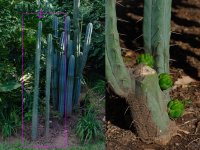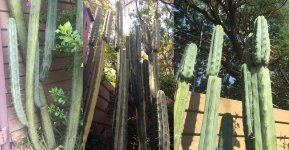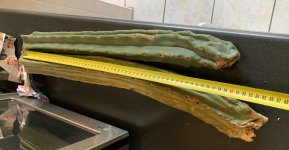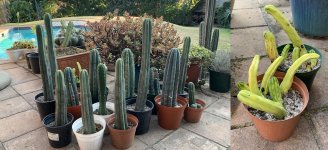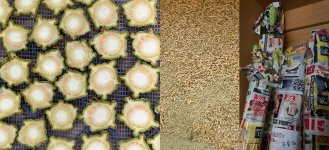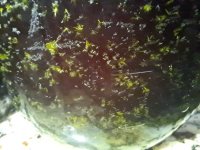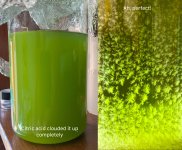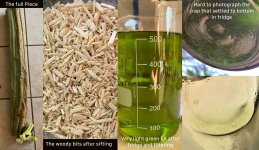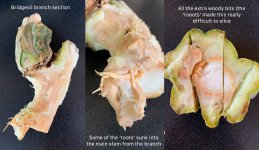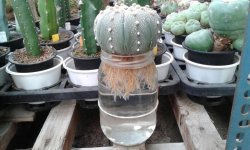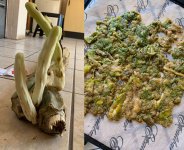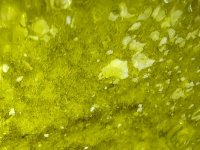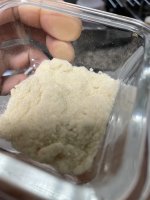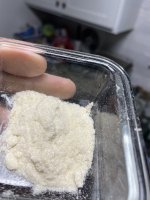Hey Loveall - I got this Bridgesii in 2007, no idea about any specifics. It looks pretty much like all others I see pics of and very much same as one I got a few years back called "Ben" but haven't harvested him yet. Thanks to my gardner's "initiative" I have about 4 clusters of it growing around my garden, all replanted ~ Nov 2016. They were trimmed off the top of the plant at the time. The mother plant is quite huge and ~3-3.5m high. The 'cuttings' are approaching ~2m+.
Current powder was from two stalks that broke off due to pressure from another plant in May 2021 and have been in dark since then (still pupping).
Since all the Bridgesii I have harvested all originate from 1 plant it makes sense that the yield is consistent. For the Citrate its around 2.8-3.1%.
Thus far I always have replanted the tips from all cuttings (didn't know that might vary from the rest) as it makes nicer looking plants. Since they were originally cut from the top of the columns I guess that would qualify them as tops.
My Pedros are 3 original plants so I need to figure out which is which in terms of yield or not as I cannot remember which is from which original. Didn't pay attention to details like that when I started planting. So far only one cutting has given a decent yield, 4 others all less than 200mg Citrate.
These pics show the mother plant itself - and some details (and you can where it was 'topped'), and one of the replanted pieces that broke (pink arrow) and is now part of the powder. It has blossomed only twice since planting, one flower each time. As you can see I planted the mother in a stupid position (under trees, too close to wall etc) as I had no real expectation for it based on reading 'alkaloid content' figures on Internet. The last pic was cut off the mother plant (August last year), and it has been dried and powdered but not extracted yet.
Hope I'm not spamming off topic here. I will compile a report from all the pieces I harvest and extract for that other thread.
Its nice to have a powder with known yield to experiment with other acids like the fumarate - just one less variable and a reason not to doubt myself when yield is dismal

Only noticed the fumarate crystals in the last batch when I decanted - I couldn't see them in the green/red murk so it was a nice surprise.
The calculator had two options for the Fumarate (1:1 and 2:1) - I am not sure which this one is. But I will assume the 75% you gave on the Wiki for now.

